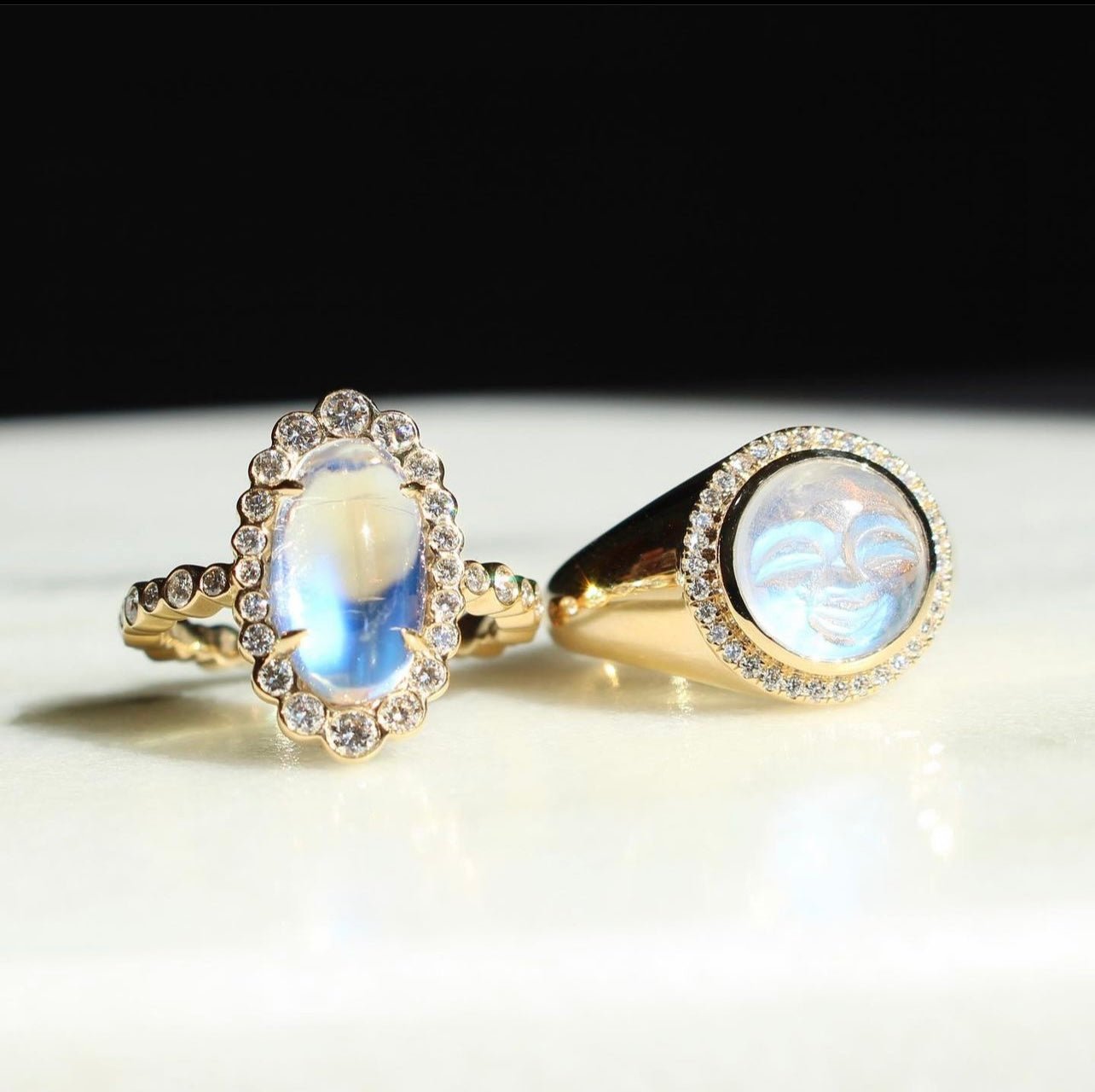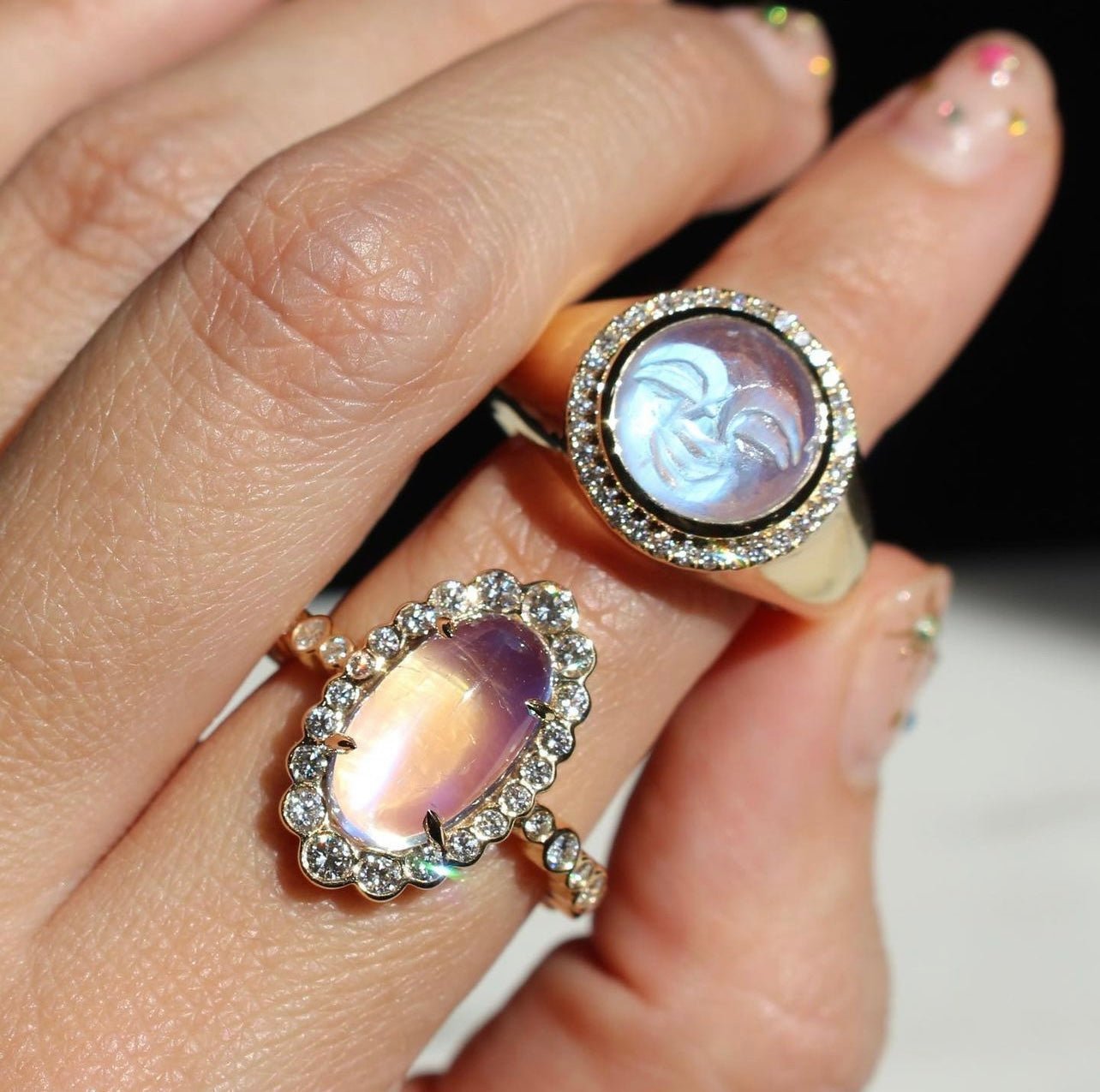Are you known for branching out of your comfort zone? Diamonds are one of the most popular and traditional gemstones on the market. They have been used for jewelry purposes for most of documented history. This is partially why they are so beloved.
Of course, their inexplicable beauty is a critical factor in their widespread appeal. Diamonds, at least those of high quality, have an exquisite shine. They sparkle with every movement, catching the light perfectly. If diamonds have decent clarity and minimal inclusions, they can even look like crystal-clear, wearable glass!
However, there is so much more to diamonds than just their translucent shimmer. Sure the most expensive and prized diamonds are colorless, but what if there was a way to break the mold and try something new?
Allow us to introduce you to the world of colored diamonds! Yes, you read that right. While colorless diamonds might be the most desirable on the market, there is a place for their colorful counterparts. If you’re tired of having all your diamond pieces blend together, colorful varieties may be perfect for your collection.
Regardless of your preference, it is ideal that you know how to check a diamond’s color. We will walk you through the different diamond grading scales, specifically color scales. We’ll also help navigate the world of fancy colored diamonds and how the positioning of color matters. Then, you can decide for yourself what the best color is.
Who knows, you might find out that you’re ready to explore a new selection of the rarest stones in the world.
Familiarize Yourself with the 4Cs
Before we can go any further, it is paramount that we introduce you to the 4Cs. The 4Cs are a diamond grading method created by the Gemological Institute of America in the early 1940s. Its purpose is to provide gemologists and jewelers with a uniform way of identifying and ranking a diamond’s characteristics.
GIA breaks down the 4Cs into color, clarity, cut, and carat weight. We are focusing on color today, so we’ll elaborate on the other categories first. A primer will help you to understand the importance of color in the overall grade a diamond is given.
Diamond clarity is second in line. It is evaluated based on how many inclusions a diamond has and whether or not they interfere with its sparkle. When worked correctly, inclusions can be hard to see with the naked eye. Most gems have some form of inclusion, so the bulk of diamonds are Very Slightly or Slightly Included.
Cut determines how well inclusions are masked and how brilliantly a diamond shines. It is imperative to the overall look of a diamond. It also determines how a diamond can be set. There is a seemingly endless list of diamond cut types, which fall into the brilliant or step cut sets.
Carat weight isn’t as important in a diamond’s grade, but it does still count. If any of the other categories are ranking poorly, a bigger carat weight might help the grade. A larger diamond might grade worse than a smaller one that is colorless with flawless clarity and excellent cut.
A Difference in Scales and Grading Systems
Now that you’re familiar with both the 4Cs and GIA, let’s break down the different color grading scales. GIA has popularized its own color scale as a part of the 4Cs method. It works by grading diamonds from the letters D to Z. A simplified version of this scale relies on numbers 0-10 and was created by the American Gem Society.
Each diamond color chart scale has similar criteria that consider the color saturation of a diamond. Both can be used based on preference. At Mark Henry Jewelry, we supply our customers with GIA diamond grades.
What Is the D-Z Scale?
The GIA color scale focuses only on letters D-Z because previous scales had included no real meaning to A-C ratings. Letters D-F on the scale are deemed colorless. An E color diamond might seem to have a full absence of color to the untrained eye. Under a microscope, it is slightly more colorful than a D color diamond.
Letters G-J are considered near colorless. An H color diamond does still appear colorless to the naked eye. A J color diamond can have a visible yellow tint. Letters K-M have faint yellow, N-R has a very light color, and S-Z has a light color. The tint of color progresses dramatically from a Q color to an R.
What Is the 0-10 Scale?
The AGS scale follows a similar pattern of ascending traces of color. AGS has moved away from confusing labels to make their diamond color grading (and all grading) more accessible. This removes the distance between a certified gemologist evaluation and the consumer’s knowledge, creating the 0 to 10 ranking scale.
A 0-1.0 diamond on the scale is considered colorless regardless of setting and rarely occurs even in the finest pieces. A 1.5-3.0 diamond is nearly colorless and more common. A 3.5-4.5 diamond has a faint body color. A 5.0-7.0 diamond has very light color, but a 7.5-10 is essentially a brown or yellow diamond.
Room for More
There is no need to write off colored diamonds quite yet. Just because they rank lower on both scales doesn’t mean they are any less worthy of love. In fact, they can add a bit of zest to your wardrobe.
Fancy Colored Diamonds
There is an entirely different scale for colored diamonds than the typical diamond color grading. This is because they have varying saturations and tones. Less expensive and valued colored diamonds can be ranked as very light, light, and fancy light. More desired stones include fancy, fancy dark, fancy intense, fancy deep, and fancy vivid.
Fancy colored diamonds are not included in the GIA color scale. A Z diamond is either a light brown or light yellow. More saturated and fluorescent yellow and brown diamonds are exempt.
A Variety of Leads
Speaking of brown and yellow diamonds, they do have potential when branded as champagne or cognac. 98% of natural diamonds do have some tones of brown; they simply vary in depth. Nitrogen impurities cause diamonds to have a yellow color, and canary yellow diamonds are highly marketable.
Australia’s Argyle mine is famed for popularizing pink diamonds. 0.1% of the mine’s riches are pink, but this only adds to their intrigue. Red diamonds are highly valuable because gemologists can’t figure out how they form.
Blue diamonds, created by boron impurities, make up only 1% of diamonds. This pushes them to the top of the charts in terms of value and price. Green diamonds with great tone and saturation are unlikely, too, making them famous and pricey.
Think Outside the Diamond
If colored diamonds just aren’t doing it for you, exotic gemstones are always a wonderful bet. They are also great alternatives to diamond engagement rings. Never shying away from making a statement, they come in a variety of unique and exquisite colors.
Consider: Alexandrite, Paraíba Tourmaline, and Turquoise
At Mark Henry Jewelry, we pride ourselves on our alexandrite collections. This color-changing gemstone transitions from a gorgeous emerald green during the day to a ravishing ruby red at night. It's the perfect two-in-one.
Another one of our favorite gems is the Paraíba tourmaline. Discovered in the 1980s in a Paraíba, Brazil mine, this gem boasts a neon-like blue-green coloring. It makes a significant impression, pairing style with class.
Turquoise is a fine gemstone with impeccable hardness and incredible wearability. We source our turquoise collection from Arizona's prized but now defunct Sleeping Beauty Mines.
Mark Henry’s Rare Gemstone Pieces
Now for the fun part: introducing you to our diamonds and exotic gemstones. Mark Henry Jewelry not only offers amazing, colorless diamonds, we know how to pair them with a pop of color. Our expert jewelers are to thank for this feat.
Our Signature Paraíba Earrings dangle from facets of 18kt white gold. They show off a 0.95ct Paraíba tourmaline, surrounded by round (0.37ct) and baguette (0.40ct) diamonds. These diamonds effortlessly accentuate the blue gem inside, making for a complex and sophisticated look.
Our Stella Ring is one of our greatest alexandrite and diamond pairings yet. It features a 0.20 ct alexandrite set into an 18kt gold band. The alexandrite is fixed within a pattern of 0.62 trillion cut diamonds. Then, 0.15ct of round diamond pepper the sides of the band.
Both of these options work as everyday pieces or gifts for special occasions. Diamond rings, and diamond earrings, have been used for centuries as commemorative presents. Adding a bit of spice to tradition can create a truly memorable act of love.
To Each Their Own
While we abide by the GIA and AGS color grading scales, colorless diamonds aren’t for everyone. Introducing some color into your diamonds can be wonderful when done correctly. A certified gemologist will guide you in the direction of a diamond from your dreams.
Sources:
Understanding the Diamond Color Scale & The 4 C's Of Diamonds | American Gem Society
(PDF) Naturally Colored Yellow and Orange Gem Diamonds: The Nitrogen Factor | ResearchGate

